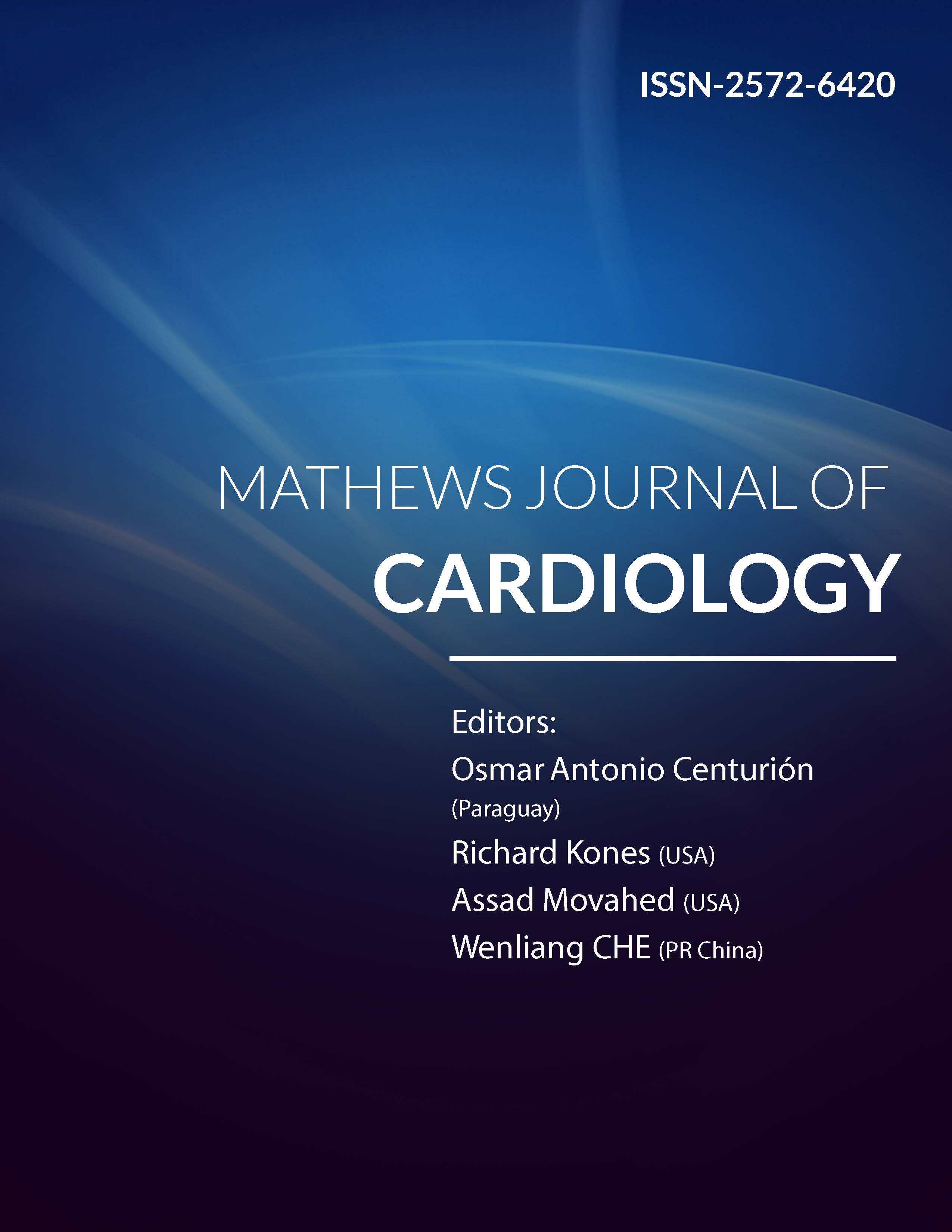
Information Links
Previous Issues Volume 2, Issue 2 - 2017
Percutaneous Closure of Adult Atrial Septal Defects in Adults: Short- and MediumTerm Results
Nejeh Ben Halima1 , Yosra Messaoudi1 , Ahmed Sghaier1 *, Houssem Thabet1, Afef Lagren1, Essia Boughzela2
1Cardiology department of IBN EL JAZZAR university hospital – Kairouan.
2Cardiology department of Sahloul university hospital – Sousse.
Corresponding Author: Ahmed Sghaier, Cardiology department of IBN EL JAZZAR university hospital – Kairouan, Tel: 0021621231994; E-Mail: [email protected]
Received Date: 12 Sep 2017
Accepted Date: 19 Sep 2017
Published Date: 21 Sep 2017
Copyright © 2017 Sghaier A
Citation: Sghaier A, Halima NB, Messaoudi Y, Thabet H. (2017). Percutaneous Closure of Adult Atrial Septal Defects in Adults: Short- and Medium-Term Results. Mathews J Cardiol. 2(2): 015.
ABSTRACT
Introduction: Atrial septal defect (ASD) is the third most common form of congenital heart defects. Controversy still exists regarding its closure in patients > 40 years-old. Few data exist on symptomatic relief and echographic parameters improvement gained after ASD closure in patients over 40 years of age.
Aim: Analyze the efficacy and safety of the percutaneous closure technique in a community of adults aged over 40 years-old with (ASD) eligible for percutaneous closure.
Methods: This is a retrospective study that included patients aged over 40 years-old who had percutaneous ASD closure between 2005 and 2013 at the cardiology department of Sahloul university hospital. Follow-up at 24 hours, 7days, 6 months, and yearly included physical examination, electrocardiogram and transthoracic echocardiography; furthermore, telephone interviews were conducted to determine clinical symptomatic status.
Results: There were 27 patients with a mean age of 47 years (from 40 to 65); 7 were aged more than 60 years-old. There were 23 women. 24 patients had clinically significant symptoms due to their ASDs, including dyspnea (22), palpitations (10), fatigue (6), chest pain (10), and dizziness (2). 3 patients reported no symptoms prior to ASD closure. The mean size of ASD as measured by transesophageal echocardiography was 26,443mm ±6, 8 (from 12 mm to 38 mm). The mean pulmonary artery pressure (PAP) was 42, 95 mmHg ± 8, 04. The mean right ventricle diameter was 40, 6 mm ± 3,3 (35mm, maximum = 45mm). A total of 26 patients had successful defect closure, in one patient, this could not be done due to unusual anatomy of left atrium. The Amplatzer device was used in 25 patients. The mean device size used for all patients was 27, 82 ± 6, 63 mm. There were no major complications. Symptomatic improvement was observed: 20 patients became asymptomatic. At 1year post procedure, the right ventricle diameter showed a statistically significant decrease 34 - + 6 mm (P < 0,001).
Conclusion:This study provided further evidence that transcatheter device closure of ASDs in adults over the age of 40 years is safe, effective, and results in symptomatic relief and regression of pulmonary pression and right ventricle size. Thus, we suggest that percutaneous closure of ASDs in adult patients greater than 40 years of age should be the first option of management.
KEYWORDS
Atrial Septal Defect; Percutaneous Closure; Adults; Congenital Heart Disease.